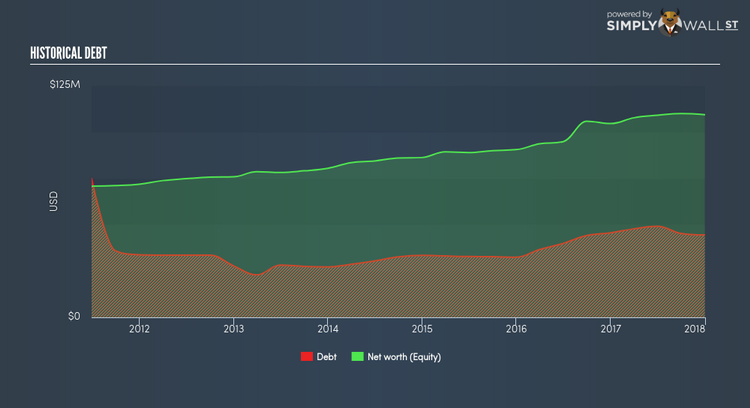Why Ohio Valley Banc Corp’s (NASDAQ:OVBC) Risk Control Makes It Attractive

Improving credit quality as a result of post-GFC recovery has led to a strong environment for growth in the banking sector. As a small-cap bank with a market capitalisation of US$199.88M, Ohio Valley Banc Corp’s (NASDAQ:OVBC) profit and value are directly affected by economic growth. This is because borrowers’ demand for, and ability to repay, their loans depend on the stability of their salaries and interest rates. Risk associated with repayment is measured by bad debt which is written off as an expense, impacting Ohio Valley Banc’s bottom line. Today I will take you through some bad debt and liability measures to analyse the level of risky assets held by the bank. Looking through a risk-lens is a useful way to assess the attractiveness of Ohio Valley Banc’s a stock investment. View our latest analysis for Ohio Valley Banc
How Good Is Ohio Valley Banc At Forecasting Its Risks?
The ability for Ohio Valley Banc to forecast and provision for its bad loans accurately serves as an indication for the bank’s understanding of its own level of risk. The bank has poorly anticipated the factors contributing to higher bad loan levels if it writes off more than 100% of the bad debt it provisioned for. This begs the question – does Ohio Valley Banc understand the risks it has taken on? With a bad loan to bad debt ratio of 71.79%, Ohio Valley Banc has under-provisioned by -28.21% which is below the sensible margin of error, illustrating room for improvement in the bank’s forecasting methodology.
What Is An Appropriate Level Of Risk?
By nature, Ohio Valley Banc is exposed to risky assets by lending to borrowers who may not be able to repay their loans. Loans that cannot be recovered by the bank are known as bad loans and typically should make up less than 3% of its total loans. Bad debt is written off as expenses when loans are not repaid which directly impacts Ohio Valley Banc’s bottom line. A ratio of 1.36% indicates the bank faces relatively low chance of default and exhibits strong bad debt management.
Is There Enough Safe Form Of Borrowing?

Ohio Valley Banc operates by lending out its various forms of borrowings. Customers’ deposits tend to carry the smallest risk given the relatively stable interest rate and amount available. The general rule is the higher level of deposits a bank holds, the less risky it is considered to be. Ohio Valley Banc’s total deposit level of 93.43% of its total liabilities is very high and is well-above the sensible level of 50% for financial institutions. This may mean the bank is too cautious with its level of its safer form of borrowing and has plenty of headroom to take on risker forms of liability.
Next Steps:
Ohio Valley Banc’s safer form of borrowing is appropriately high compared to the liabilities of the company. Conversely its cash flow could be negatively impacted by its below-average bad debt management. Keep in mind that a stock investment requires research on more than just its operational side. There are three relevant factors you should further research:
Valuation: What is OVBC worth today? Has the future growth potential already been factored into the price? The intrinsic value infographic in our free research report helps visualize whether OVBC is currently mispriced by the market.
Management Team: An experienced management team on the helm increases our confidence in the business – take a look at who sits on Ohio Valley Banc’s board and the CEO’s back ground.
Other High-Performing Stocks: Are there other stocks that provide better prospects with proven track records? Explore our free list of these great stocks here.
To help readers see pass the short term volatility of the financial market, we aim to bring you a long-term focused research analysis purely driven by fundamental data. Note that our analysis does not factor in the latest price sensitive company announcements.
The author is an independent contributor and at the time of publication had no position in the stocks mentioned.

